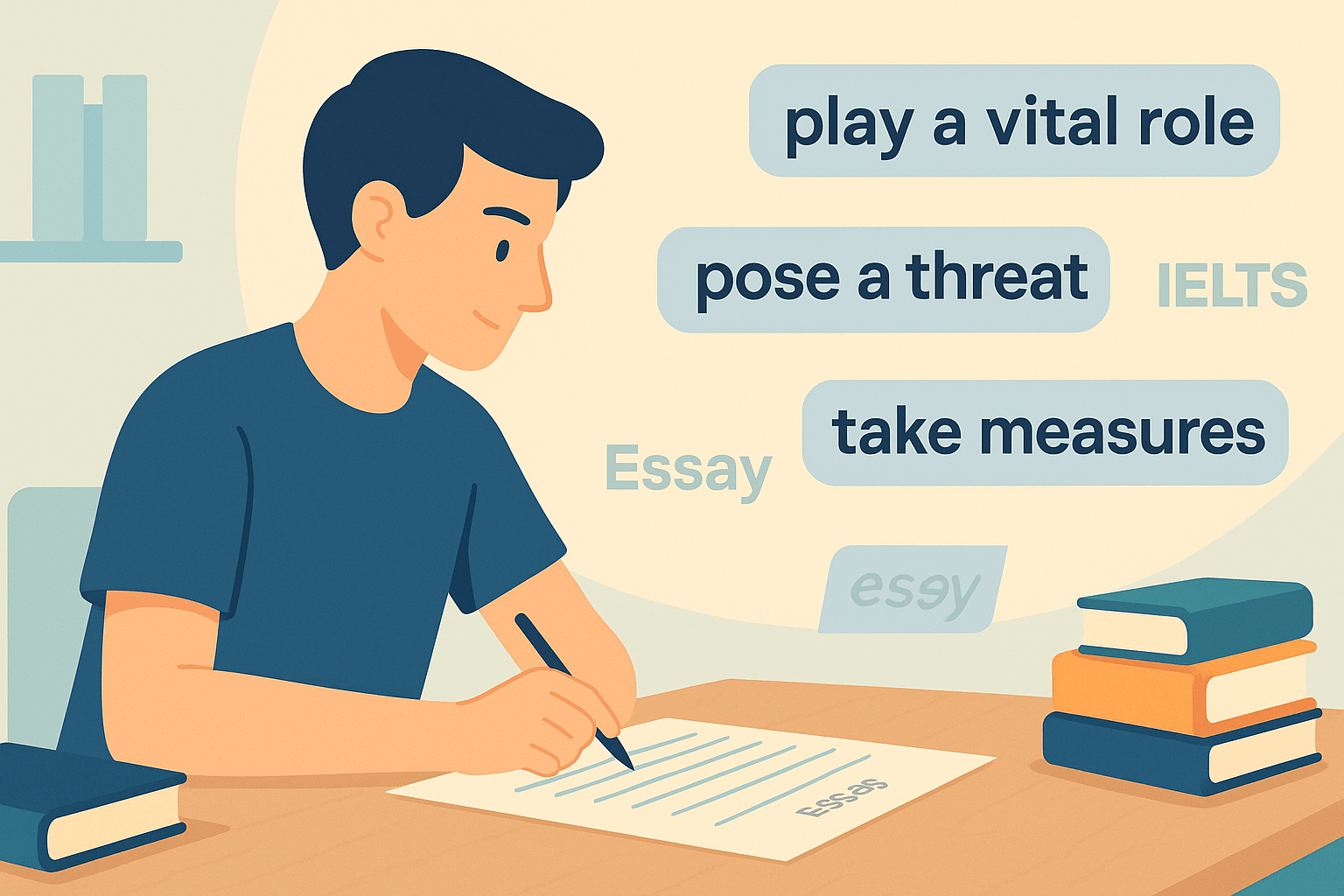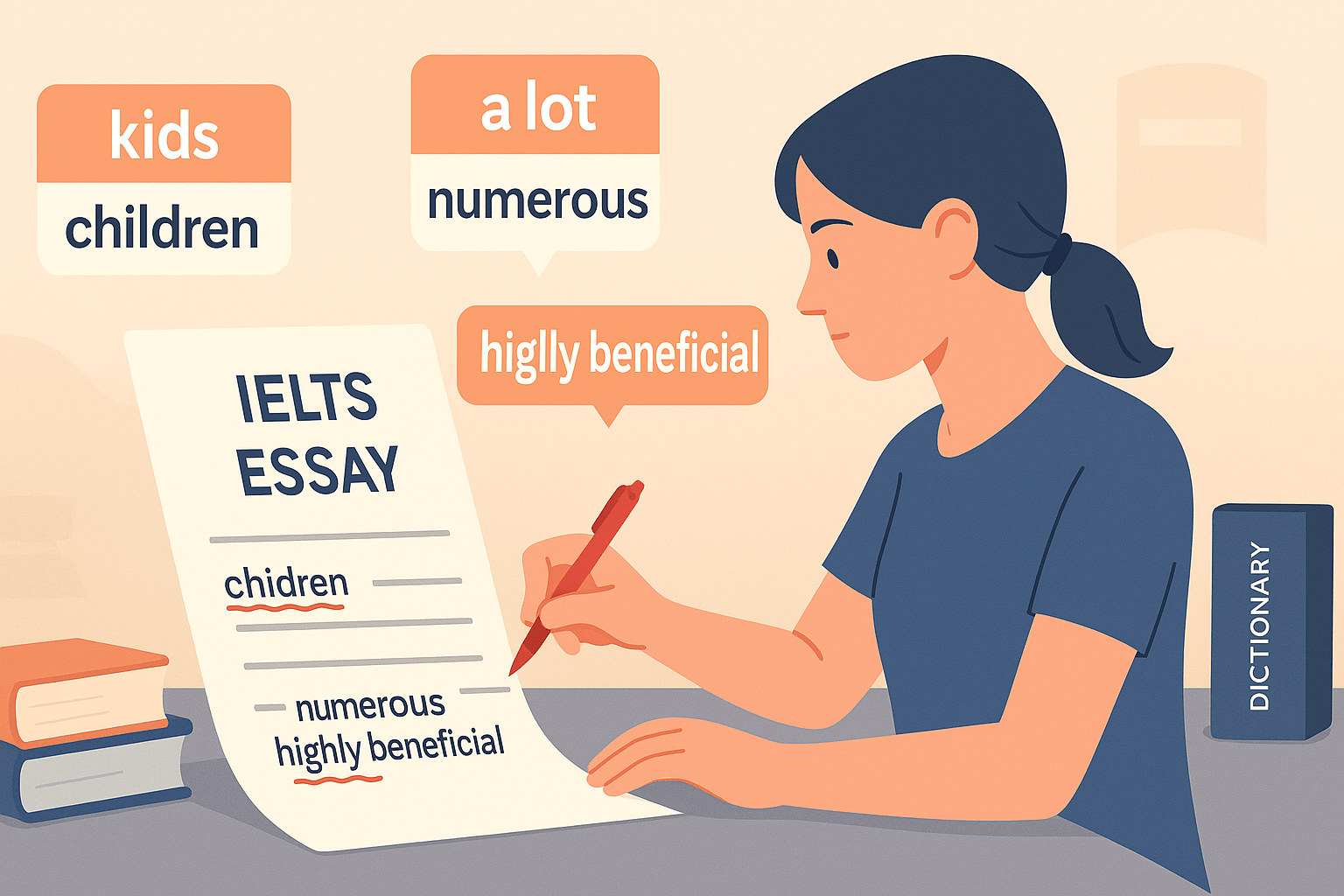IELTS Bar Chart vocabulary is essential if you want to score Band 7 or higher in Writing Task 1. Bar charts are one of the most common visuals in IELTS Academic Writing, and the way you describe them can make or break your score.
Instead of repeating basic words like “shows” or “increases” over and over, you can upgrade your essay with precise, academic vocabulary. In this guide, I’ll share 25 high-scoring vocabulary items, grouped by function, along with examples, comparison tips, and practice exercises.
If you want a complete guide to all Task 1 chart types, explore our IELTS Writing Task 1 Vocabulary: The Complete Guide to Graphs, Charts, and Diagrams — it’s the pillar resource that connects all specialized vocabulary blogs, including bar charts.
Why Vocabulary Matters in IELTS Bar Charts
In IELTS Writing Task 1, examiners assess Lexical Resource, which is your range and accuracy of vocabulary. Strong word choice helps you:
- ✅ Describe trends and comparisons precisely
- ✅ Avoid repetition and informal expressions
- ✅ Maintain an academic tone suitable for Band 7+
According to official marking criteria (IELTS.org), precise and varied vocabulary is key to moving beyond Band 6.5.
In short, the better your vocabulary, the more fluent and academic your writing sounds — and that means a higher band score.
IELTS Bar Chart Vocabulary: The 25 Essentials
Here’s my teacher-approved vocabulary, organized into functional groups you can easily remember and use in your Task 1 essays.
1. Verbs for Describing Data
These verbs describe what is happening in the chart:
| Basic Verb | Band 7+ Alternative |
|---|---|
| show | illustrate, depict |
| increase | rise, climb, grow |
| decrease | fall, decline, drop |
| stay the same | stabilise, remain steady |
| differ | vary |
| have | record, experience |
Examples:
- The bar chart illustrates the number of tourists in five countries.
- In 2010, sales climbed to 8 million units.
- The figures remained steady between 2015 and 2018.
2. Adjectives & Adverbs for Precision
These words show the degree and intensity of change:
| Adjectives | Adverbs |
|---|---|
| slight | slightly |
| significant | significantly |
| considerable | considerably |
| dramatic | dramatically |
| steady | steadily |
Examples:
- There was a dramatic increase in exports in 2015.
- The population grew steadily over the next decade.
3. Comparative Language
Bar charts often require comparison between bars.
Useful phrases:
- more than / less than
- twice as much / half as much
- the highest / the lowest
- in contrast to
- slightly higher / considerably lower
- equal to / similar to
Examples:
- China had twice as many internet users as India.
- Sales in the UK were considerably lower than in the USA.
4. Time Connectors & Structure Words
Time connectors organize your answer and show when changes occur.
Common phrases:
- in 2010 / between 2000 and 2010
- over the period / throughout the period
- during the first half of the decade
- by the end of the year
Examples:
- Over the period shown, car ownership increased steadily.
- By 2020, the figure had almost doubled.
5. Academic Alternatives for Basic Words
Upgrade simple words to academic equivalents:
| Informal | Academic Alternative |
|---|---|
| big change | significant shift |
| stayed the same | stabilised |
| goes up a lot | surged / soared |
| goes down | declined / dropped |
| number | figure / amount |
Examples:
- The figures surged in 2018.
- There was a significant shift in consumer spending after 2010.
Example Sentences Using Bar Chart Vocabulary
- The bar chart illustrates the average income across five countries in 2020.
- Employment rates varied significantly between men and women.
- Australia recorded the highest number of applicants.
- The USA’s figure was twice as high as Canada’s.
- Between 2010 and 2020, mobile usage grew steadily across all age groups.
Bar Chart Practice Task
Task:
The bar chart below shows the sector contributions to India’s gross domestic product from 1960 to 2000.
Sample Sentence Using Vocabulary:
Fiction books accounted for the highest sales, while biographies recorded the lowest figures in 2022.
Your Challenge:
Describe the second-highest bar using at least one adverb and a comparison phrase!
Tips for Remembering & Using This Vocabulary
Here’s how to make this vocabulary stick:
- Group words by category (verbs, comparisons, academic replacements)
- Create your own example sentences for each word
- Practice describing sample bar charts with a time limit
- Use spaced repetition tools like Anki or Quizlet
- Write full mock Task 1 answers using this vocabulary
The more often you use these words in writing, the more natural and automatic they become — and that’s exactly what the examiner wants.
Want to Master Bar Chart Descriptions?
To reach Band 7 or higher, combine strong vocabulary with clear structure and grammar:
- Download our free IELTS Bar Chart Vocabulary Cheat Sheet with 25+ words and examples.
- Check our full guide: IELTS Writing Task 1 Vocabulary: The Complete Guide to Graphs, Charts, and Diagrams to master all Task 1 visuals.
- Explore our Task 1 course for step-by-step training and real teacher feedback.
Join thousands of learners at IELTSzone.org and take your IELTS Writing Task 1 to the next level!






8 Responses
Launch into the epic galaxy of EVE Online. Shape your destiny today. Create alongside thousands of explorers worldwide.